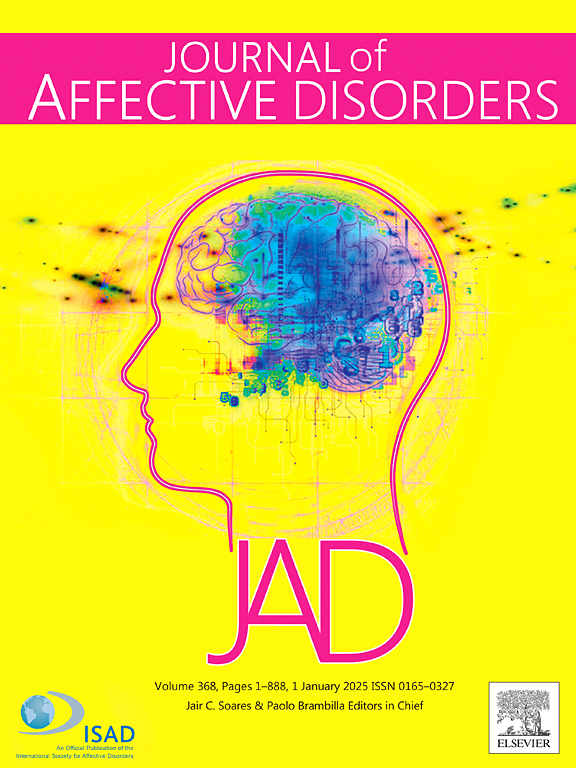Prefrontal oxygenation during experimental pain in adolescents engaging in non-suicidal self-injury
IF 4.9
2区 医学
Q1 CLINICAL NEUROLOGY
引用次数: 0
Abstract
Background
The intricate role of pain in non-suicidal self-injury (NSSI) makes the investigation of alterations in brain function during pain processing a critical yet underexplored topic. The aim of this study was to investigate fNIRS correlates of experimental pain and how these differed between adolescent patients engaging in NSSI and healthy controls.
Methods
154 adolescent patients with NSSI and 48 healthy controls underwent a heat pain stimulation with linearly increasing temperature from 32 °C to max. 50 °C, during which fNIRS activity was recorded. Associations between fNIRS activity and pain perception (i.e. pain threshold, pain tolerance and pain intensity) were examined using linear mixed models and linear regression analyses.
Results
Across groups, we found a decrease in prefrontal oxygenation during increasing pain stimulation: Oxygenated hemoglobin was higher during baseline than during pain threshold (b = −0.36, p < .001) and higher during pain threshold than during pain tolerance (b = −0.10, p < .001). We did not find differential patterns of prefrontal oxygenation across the pain assessment between patients and healthy controls. Also, no association between pain intensity and fNIRS activity was found.
Limitations
fNIRS was only recorded in prefrontal regions and our design did not include a non-painful stimulation as a control condition.
Conclusion
While our study adds to the understanding of prefrontal hemodynamic changes associated with pain processing, it did not contribute further evidence to the few existing findings regarding altered neural processing of pain in adolescents engaging in NSSI.
进行非自杀性自残的青少年在实验性疼痛期间的前额叶缺氧情况。
背景:疼痛在非自杀性自伤(NSSI)中的作用错综复杂,因此研究疼痛处理过程中大脑功能的变化是一个重要但尚未得到充分探索的课题。本研究的目的是调查实验性疼痛的 fNIRS 相关性,以及这些相关性在 NSSI 青少年患者和健康对照组之间的差异。50 °C,在此期间记录 fNIRS 活动。使用线性混合模型和线性回归分析研究了 fNIRS 活动与痛觉(即痛阈值、疼痛耐受性和疼痛强度)之间的关联:结果:在各组中,我们发现在疼痛刺激增加时,前额叶氧饱和度下降:限制因素:fNIRS 只在前额叶区域记录,而且我们的设计没有将非疼痛刺激作为对照条件:虽然我们的研究加深了人们对与疼痛处理相关的前额叶血液动力学变化的理解,但它并没有为现有的关于青少年NSSI疼痛神经处理改变的少数研究结果提供进一步的证据。
本文章由计算机程序翻译,如有差异,请以英文原文为准。
求助全文
约1分钟内获得全文
求助全文
来源期刊

Journal of affective disorders
医学-精神病学
CiteScore
10.90
自引率
6.10%
发文量
1319
审稿时长
9.3 weeks
期刊介绍:
The Journal of Affective Disorders publishes papers concerned with affective disorders in the widest sense: depression, mania, mood spectrum, emotions and personality, anxiety and stress. It is interdisciplinary and aims to bring together different approaches for a diverse readership. Top quality papers will be accepted dealing with any aspect of affective disorders, including neuroimaging, cognitive neurosciences, genetics, molecular biology, experimental and clinical neurosciences, pharmacology, neuroimmunoendocrinology, intervention and treatment trials.
 求助内容:
求助内容: 应助结果提醒方式:
应助结果提醒方式:


